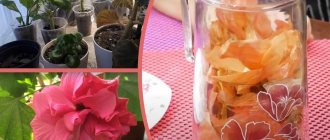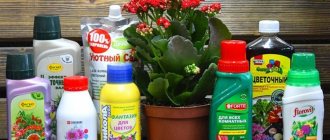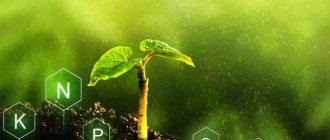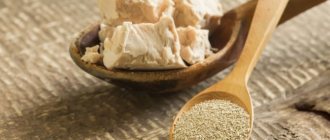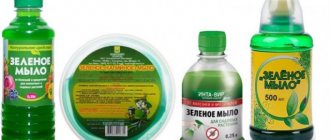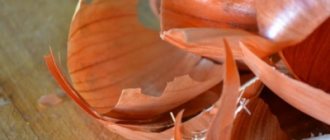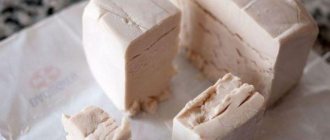What are the benefits of onion peels in the garden?
Gardeners use onion skins for several purposes. It is used to treat the soil, carry out spraying, and also add infusions to water for irrigation. In all cases, the product has a strengthening, disinfecting and stimulating effect.
Compound
Onion flakes contain many useful components. Among the main ones:
- quercetin and rutin;
- phytoncides;
- vitamin PP;
- vitamin B1;
- carotenoids;
- ascorbic acid.
The scales contain vitamins, rutin and quercetin.
The raw materials also contain useful minerals - potassium, iron and calcium.
What are the benefits of onion peels for plants and soil?
Fertilizing the garden with husks helps:
- improve soil composition;
- repel or destroy insect pests;
- strengthen plant roots and accelerate development;
- increase crop resistance to cold weather.
Important! The benefit of onion peels for the garden is to increase the amount of sugars in the fruit.
Purposes and methods of using onion peels in the garden
Natural fertilizer is used on the site:
- to saturate the soil with vitamins and microelements;
- for protection against fungal diseases and insects;
- to restore the vitality of plants damaged by frost;
- for long-term storage of vegetables.
The following methods of application exist:
- spraying plantings on leaves;
Onion infusions do not burn the leaves and are safe when sprayed - adding decoctions and infusions to water for irrigation.
When watering with onion decoctions, valuable substances quickly reach the roots
Husks are also used to mulch the soil in beds and under trees. It not only serves as fertilizer, but also prevents moisture evaporation.
Onion peels are one of the options for mulching plantings
How to collect onion peels for the garden
Usually, raw materials are harvested in the fall before sowing vegetables before winter. The bulbs are sorted and their scales are removed.
Peelings of yellow and red onions are suitable for fertilizer.
After collection, the husks are laid out to dry for several days in a warm place without drafts. Then the raw materials are poured into a cotton bag and put away in a cool place until spring.
How to use onion peels for your garden
Basically, infusions and decoctions are made based on onion peelings. There are several recipes for preparing fertilizers.
How to prepare an infusion of onion peels for the garden
A quick infusion of onion peels for use in the garden is done like this:
- an ordinary 10 liter bucket is tightly filled with dry cleaning;
- fill to the top with water at about 70 ° C;
- cover with a lid and leave for 12 hours.
Preparing the infusion is very simple - fill a bucket with husks and fill it to the top with water
The finished infusion is filtered and immediately used to fertilize the plantings.
Infusion of onion peels for the garden using the cold method
You can fill the cleaning with cool water. The preparation process will take longer - 2 days, but the finished infusion will retain maximum benefits. It is not suitable for urgent spraying, but it can be used for routine fertilization.
You can insist on cleaning in cold water, which preserves more valuable substances
How to make an infusion of onion peels for plants in boiling water
Typically, onion peel tincture for plants is poured with hot water at 70-80 °C. But you can also use boiling water for cooking - in this case, keep the peelings in a bucket under a lid for 24 hours.
When infused in boiling water, onion peelings release maximum valuable substances
The finished product is filtered, diluted with clean water 1 to 5 and used to water the soil.
Recipes for onion peel decoctions for plants
In addition to infusions, decoctions of husks are used to fertilize the soil. There are several popular cooking recipes:
- Concentrated treatment. A large metal bucket is tightly filled with scales, compacted and filled with hot water. Then boil for 2 minutes, remove from heat and leave for 2 days. Before use, the decoction is diluted in a ratio of 1 to 5.
- Means for spraying and watering. Place 2 handfuls of peelings in 10 liters of water and boil for several minutes. After steeping for 4 hours, use it immediately, without straining or diluting.
- Fertilizer for garden and indoor flowers. A handful of dry husks is immersed in 1.5 liters of water and boiled for about 5 minutes, and then kept covered for 2 hours.
Fertilizer husks can be boiled and used almost immediately after cooling.
During processing, some of the beneficial substances in the scales are destroyed. But the remaining vitamins and minerals pass into the water in high concentrations.
As mulch
For mulching, you can use both the cake remaining after preparing infusions and fresh peelings. The raw materials are scattered over the beds or under the bushes in a layer of about 5 cm.
When mulching a garden, the husks need to be moistened so that they are not blown away by the wind.
What plants should not be watered with onion peels?
Despite the fact that onion peel contains a large number of microelements necessary for plants, and is also a natural fungicide and insecticide, it cannot be used for all indoor flowers.
The following plants should not be watered with a decoction of the husk:
Fertilizing these flowers with onion peels not only does not give a positive result, but also harms their growth and full development.
Rules for using onion peels in the garden
You can use onion peelings to fertilize almost any plant. But when caring for specific crops, you need to know their requirements.
Onion peels for feeding seedlings
Vegetable crops need fertilizers already in the first stages of growth. For young seedlings in a greenhouse or in boxes on a windowsill, prepare the following infusion:
- a handful of husks is placed tightly in a jar;
- pour boiling water in a liter volume;
- leave to infuse for a day.
For seedlings, onion peels are brewed in just a liter of water.
Onion peels for seedlings are diluted in a ratio of 1 to 3 with warm, clean water and used for watering at the root.
For vegetable crops
Fertilizing with onion peels is beneficial for actively growing crops at any stage. Healthy plantings can be sprayed only 2-3 times per season; weakened plants can be treated weekly.
For tomatoes and cucumbers
It is recommended to water and spray cucumbers in the greenhouse and in the soil every week to protect against fungi. You can use any infusion on the husk.
Tomatoes are watered with onion fertilizer against fungi throughout the entire cultivation - from seedlings to harvesting. You can use a standard infusion, the consumption per bush is 1 liter, and the root method of feeding is preferable for tomatoes.
Tomatoes can be watered with infusions of onion scales throughout the season.
Adding onion peels when planting potatoes
Onion peelings help protect potatoes from a dangerous pest - wireworm. They are usually used like this: a large handful of husks are placed into the prepared holes at the planting stage.
Onion peelings are placed in the holes even before potatoes are planted - this repels pests
Advice! Potato tubers can be sprayed with onion fertilizer before planting, this will increase resistance to fungal diseases.
For pumpkin
To fertilize pumpkin, use a concentrated decoction of the husk, diluted with clean water. They do it like this:
- a glass of purification is filled with water, you need to take 2 liters;
- boil and immediately turn off;
- leave covered for 12 hours.
A strong onion infusion can be used to treat pumpkin to protect against diseases and increase yield.
Fresh fertilizer is diluted with a bucket of clean water and the bed is treated before planting the pumpkin. Throughout the season, the vegetable crop is watered or sprayed with the same infusion once every 2 weeks.
For radishes
You can use onion peels in the garden to increase the juiciness of radishes. For processing, take the following infusion:
- pour 8 liters of boiling water into a liter jar of dry raw materials in a bucket;
- cover with a lid and leave for a day;
- The finished product is diluted with water 1 to 5.
Onion peels help prevent radish cracking and disease
The resulting infusion is used to treat radishes immediately after planting, and then spray the crop twice a month during growth.
For fruit and berry crops
The husks can be used to process strawberries, garden strawberries, gooseberries, currants and other crops. Fertilizer improves yields and makes berries sweeter, and also helps get rid of pests.
Not only strawberries, but also any fruit crops can be treated with onion infusions
The treatment agent is taken as a standard one, a bucket is filled with scales and filled with hot water, after which it is left for 12 hours. For the purpose of fertilization and prevention, fruit and berry crops are sprayed before and after flowering; to combat insects, weekly watering at the root is used.
For garden flowers
The benefits of onion peels for plants also extend to garden flowers. The fertilizer is used in the same way as for fruit and berry crops, prepared in accordance with the selected recipe and diluted with clean water to reduce the concentration. Preventive spraying is carried out when buds are pouring and during flowering.
Onion peel and its infusions are an effective remedy for improving flowering
To protect against fungi, you can water garden flowers with onion infusion at the root. When infested by pests, spraying is usually used.
Preparation of fertilizers from onion peels
Dry onion “clothes” can not only be infused or used as a base for decoctions, but also embedded directly into the ground when planting indoor plants. This will disinfect the soil and increase the immunity of the flowers.
To ensure that the plants are not only healthy, but also enjoy lush flowering, they are fertilized with a decoction of the husk. It is prepared like this:
- Take 4 handfuls of raw materials and throw them into a metal bucket.
- Water is poured there, filling the bucket to the top, and put on fire.
- Boil the entire composition.
- After removing from the stove, leave to infuse for a day.
- Strain.
The resulting broth is diluted (1.5 liters per bucket of clean water) and poured over green pets.
A decoction and infusion of onion peels has the following properties:
This is extremely important for indoor flowers, which in the summer are moved to loggias and balconies, causing them to suffer from polluted street air.
Onion peel is an affordable and safe means for feeding indoor flowers, preventing diseases and repelling pests. However, it is worth remembering that not all types of plants can be watered with a decoction or infusion based on it - it can have a negative effect on some of them.
Onion is a vegetable that is very often used in preparing various dishes. Not everyone knows that onion peels, which are mostly thrown away, are an excellent fertilizer.
How to use onion peels for indoor plants and flowers
Houseplants often suffer from a lack of useful elements in cramped pots. Fertilizing with natural solutions supplies them with vitamins and minerals through leaves and roots, strengthens the immunity of crops.
Is it possible to water flowers with onion peels?
Infusions and decoctions of onion scales are suitable for fertilizing indoor plants at the root. If you follow the correct dosage, it will not cause harm.
Watering flowers with a decoction of onion peels
The decoction has a high concentration of useful substances, and is usually used if a houseplant begins to turn yellow and wither. The product is prepared as follows: boil 1 cup of peelings in a saucepan of water for 5 minutes, then cool and apply root fertilizer.
Indoor plants can be watered with onion decoction if there is a severe lack of minerals
If there is a lack of nutrients in the soil or with fungi, the product helps quickly. The result becomes noticeable after the first application; fertilize the plants with onion peels once a week.
Watering flowers with infusion of onion peels
For the purpose of routine preventive fertilizing, a fertilizer with a low concentration is used. To prepare it, just remove the dry scales from a pair of large golden onions and pour a liter of boiling water over it, and then leave for 3 days.
The prepared product is poured onto the soil in the pots. Usually after 2 weeks the plants begin to actively grow.
What are the benefits of watering onion skins for violets?
Beautiful violets react sensitively to lack of nutrients. If the flower has stopped growing, turns yellow and does not bloom, you can treat it with onion infusion. Fertilizer will deliver vitamins to plant tissues, increase immunity and improve flowering.
It is recommended to fertilize violets with onion peels once every 2 months.
A glass of dry cleaning must be filled with 2 liters of water and boiled for half an hour over low heat, and then left for 6 hours under the lid. Watering is carried out with the finished product; it is important to carry it out in the morning or in the evening, at a stable temperature in the room and not earlier than a month after transferring it to a new pot. Water should not get on the velvety leaves - this is harmful for the violet.
Attention! It is recommended to apply fertilizers for violets every 2 months; the flowering plant very quickly depletes the soil in the pot. Autumn treatments are especially useful, as they help the plant store nutrients.
Onion peels as fertilizer
Try adding the husks that you collected over the winter to the soil during spring digging. You will increase your harvest.
We are constantly receiving letters in which amateur gardeners are worried that due to the cold summer this year there will be a poor harvest of potatoes, tomatoes, cucumbers, and other vegetables. Last year we published TIPS on this matter. But unfortunately, many did not listen, but some still applied. Here is a report from our reader, we would like to recommend biostimulants for plant growth that will help increase the yield by up to 50-70%.
We advise you to prepare in advance for the summer season, pay attention to this biological product. There are a lot of positive responses.
To prepare the recharge, you need to take a handful of onion scales, add 1.5 liters of water, put on fire, and wait 7 minutes after boiling. Cool afterwards. This fertilizer can be used to spray leaves, water the soil of indoor plants to prevent diseases, to prevent pests from appearing, and also feed the sprouts with the amount of nutrients they need. But we must not forget that you always need to prepare a fresh decoction, since it is not stored, but loses its beneficial properties and goes rotten.
Soil for feeding soil
You can also mix onion scales with soil when sowing seeds of various crops. Onion peels as a fertilizer have a bactericidal effect and improve the “immunity” of seedlings, which get sick much less and produce a larger harvest.
Treatment with onion peels against pests and diseases
An important area of application of onion peels for the vegetable garden is the fight against fungal diseases and pests. For treatments, use 2 liters of a concentrated decoction aged five days, topped up with a bucket of fresh water.
Onion peel for aphids
The active substances in onion infusion help cope with even large colonies of aphids. Infected plantings are generously sprayed with a spray bottle on a cloudy day, not forgetting to treat the underside of the leaf blades.
Spraying onion scales with infusions helps get rid of aphids
Treatments can be repeated every week. But usually it is possible to eliminate aphids after three uses of fertilizer.
Onion peel from wireworm
The pest feeds on the underground parts of garden crops and causes particular harm to potatoes. To combat wireworms, dry onion peelings are planted directly into the beds when planting tubers.
To prevent wireworms, onion peelings are usually embedded in the soil in the spring.
If the pest does appear, the soil can be shed once a week with a concentrated decoction. But usually adding husks to the holes reliably protects the culture.
Against blackleg and bacteriosis
Fungal diseases most often affect seedlings and adult plants during waterlogging and sudden temperature changes. To prevent the development of diseases or cope with symptoms, plantings are sprayed with any of the fertilizers on onion peelings once a week in the spring and during rainy summer conditions.
In humid weather, you can spray the garden with an infusion of onion peels to prevent blackleg.
Onion remedies for bacteriosis and blackleg are rarely applied under the root. Usually, with these ailments, the soil is already very swampy.
Against bacterial cancer
The disease leads to the appearance of tumors and wounds on the rhizomes and above-ground parts of plants.
Decoctions of onion scales help prevent bacterial cancer on poor soils
The best way to fight cancer is preventively. If the soil on the site is poor and the plantings often get sick, they should be sprayed with onion fertilizers at intervals of 14 days from the end of flowering to fruiting.
Against downy mildew
The disease, which leaves a whitish coating on the tops, especially often affects cucumbers and tomatoes in August. To prevent the disease, plantings are sprayed weekly with onion infusion. If the disease has already appeared, then you can use a concentrated decoction.
Fertilizers based on onion scales protect plantings from downy mildew
Against spider mites and thrips
Phytoncides contained in onion peels help get rid of thrips on vegetable crops and spider mites. Spraying is carried out from the beginning to the end of summer every week; you can use any infusion or decoction. When processing, it is important to ensure that the product gets on, among other things, the underside of the leaves, where pests usually hide.
An infusion of onion scales helps get rid of spider mites
Advice! For greater effectiveness, you can add a little soap shavings to the solution.
